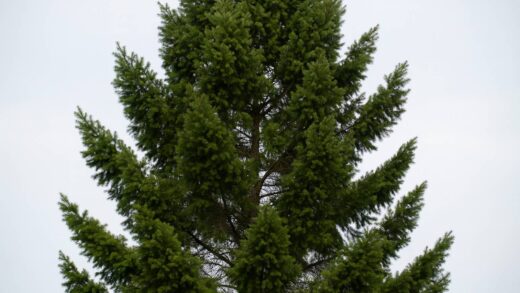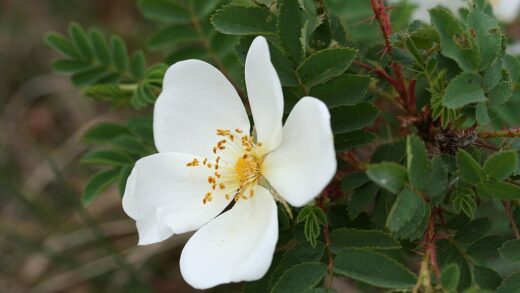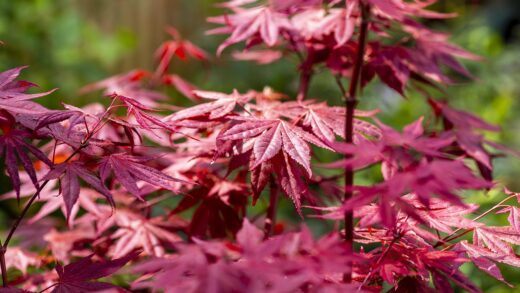Apple-scented mint, also known as pineapple mint due to its subtly sweet, fruity aroma, is a delightful and relatively easy-to-care-for herb that can be a wonderful addition to any garden. Its variegated, cream-and-green foliage adds a splash of color, making it as much an ornamental as a culinary plant. To truly thrive, this perennial requires a basic understanding of its needs, from soil conditions to regular maintenance. Providing the right environment will not only ensure its vigorous growth but also enhance the intensity of its unique fragrance and flavor, which can be a game-changer in teas, desserts, and various savory dishes. Neglecting its fundamental requirements can lead to a less robust plant, with diminished aromatic qualities and a greater susceptibility to common garden ailments.
Proper care begins with selecting the right location, a decision that will profoundly impact the plant’s long-term health and vitality. This variety of mint prefers a spot that receives ample morning sunlight but is shielded from the harsh, scorching afternoon sun, especially in warmer climates. The intense heat can cause the delicate variegated leaves to scorch, leading to brown, crispy edges that detract from its ornamental value. Therefore, a location offering partial shade is often the ideal compromise, balancing the need for light for photosynthesis with protection from excessive heat stress. This thoughtful placement sets the foundation for a thriving, beautiful plant.
The soil composition is another critical factor in the successful cultivation of apple-scented mint. It flourishes in a well-draining, moderately fertile loam that remains consistently moist but not waterlogged. Poor drainage is a significant threat, as it can lead to root rot, a fungal disease that can quickly prove fatal to the plant. To prevent this, amending heavy clay soils with organic matter like compost or aged manure is highly recommended to improve both its structure and drainage. Conversely, overly sandy soils may drain too quickly, requiring more frequent watering and the addition of organic material to enhance their moisture-retentive capabilities.
Regular maintenance tasks are essential to keep the plant healthy and looking its best throughout the growing season. This includes consistent watering, especially during dry spells, to maintain that crucial soil moisture. Furthermore, periodic trimming or harvesting of the leaves not only provides a steady supply for culinary use but also encourages the plant to grow bushier and more compact. Removing any flower spikes as they appear can also help direct the plant’s energy into producing more of the flavorful and aromatic foliage that it is prized for.
Finally, it is crucial to manage its vigorous and often invasive growth habit, a characteristic common to most members of the mint family. Apple-scented mint spreads through underground runners, known as rhizomes, which can quickly colonize large areas of a garden bed if left unchecked. To prevent this from becoming a problem, many gardeners choose to grow it in containers or to install root barriers in the ground. This proactive approach to containment ensures that you can enjoy the plant’s many benefits without it overstaying its welcome and overwhelming its neighbors in the garden.
More articles on this topic
Understanding the plant’s characteristics
To properly care for apple-scented mint, one must first appreciate its unique botanical characteristics, which set it apart from other mint varieties. It is a perennial herb that belongs to the Lamiaceae family, a group renowned for its aromatic members. The most striking feature of this particular cultivar is its foliage; the leaves are softly hairy, serrated at the edges, and boast a beautiful variegation of creamy white and green. This decorative quality makes it a popular choice for ornamental borders and herb gardens alike. The texture and appearance of the leaves are a direct indicator of the plant’s health, with vibrant colors signaling a happy, well-cared-for specimen.
The aromatic profile of this mint is another of its defining features and is hinted at in its common names, apple or pineapple mint. When the leaves are bruised or crushed, they release a wonderfully sweet and fruity fragrance that is noticeably different from the sharp, cool scent of peppermint or spearmint. This unique aroma translates directly to its flavor, which is milder and less overpowering than its more common relatives. This subtlety makes it exceptionally versatile in the kitchen, where it can lend a delicate, fruity note to a wide array of dishes and beverages without dominating the other ingredients.
Growth habit is a key consideration for any gardener looking to incorporate this plant into their landscape. Like its mint brethren, Mentha suaveolens ‘Variegata’ is an enthusiastic grower, spreading via a network of underground rhizomes that can quickly extend its territory. This vigorous nature means it can function as an effective ground cover in certain situations, rapidly filling in empty spaces with its attractive foliage. However, this same trait requires diligent management to prevent it from becoming invasive and outcompeting other, less assertive plants in a mixed bed. Awareness of this tendency is the first step toward successful long-term cultivation.
The plant also produces small, inconspicuous flowers, typically in shades of white or pale pink, which appear in dense spikes during the summer months. While these blooms are attractive to pollinators such as bees and butterflies, many gardeners choose to remove them. This practice, known as deadheading, is not merely for aesthetic reasons; it encourages the plant to channel its energy into producing more of the desirable leaves. Furthermore, preventing the plant from setting seed can also help to control its spread, although the primary method of propagation remains its aggressive root system.
More articles on this topic
Optimal soil and location
Choosing the perfect site for your apple-scented mint is arguably the most critical step in ensuring its long and healthy life. The ideal location balances the plant’s need for sunlight with protection from excessive heat. Morning sun is highly beneficial, as it provides the energy needed for robust growth and essential oil production, which is responsible for the plant’s signature scent. However, the plant is vulnerable to the intense, direct sunlight of the afternoon, which can easily scorch the delicate variegated portions of the leaves, causing unsightly brown spots and stress. Therefore, a spot with partial afternoon shade is the gold standard for this particular mint.
The soil environment you provide is just as important as the location. Apple-scented mint thrives in soil that is consistently moist yet well-drained. This might sound like a contradiction, but it simply means the soil should be able to retain enough water to keep the roots hydrated without becoming a soggy, anaerobic environment. A rich, loamy soil amended with plenty of organic matter, such as compost or well-rotted manure, will typically provide this ideal balance. Organic matter acts like a sponge, holding onto moisture while also creating air pockets that allow excess water to drain away freely.
Container gardening presents an excellent solution for cultivating apple-scented mint, especially for those concerned about its invasive tendencies. A large pot, at least 30-40 centimeters in diameter, will provide ample space for the root system to develop. When planting in a container, it is imperative to use a high-quality potting mix and to ensure the pot has adequate drainage holes. Potted mint will require more frequent watering than its garden-grown counterparts, as the soil in containers tends to dry out much more quickly, particularly during the warm summer months.
When planting directly into a garden bed, proactive measures to control its spread are highly recommended. One effective method is to plant it within a bottomless bucket or a specialized root barrier that is sunk into the ground, leaving a few centimeters of the rim above the soil level. This physical barrier will prevent the underground runners from escaping and taking over the entire garden. This simple preparatory step can save a great deal of effort in the long run, allowing you to enjoy the herb without the constant battle of keeping it in its designated space.
Watering and feeding regimen
A consistent and appropriate watering schedule is fundamental to the health of apple-scented mint. This herb prefers its soil to be kept evenly moist, a condition that mimics the damp meadows and stream banks of its native habitats. The key is to avoid both extremes: do not allow the soil to dry out completely, but also do not let it become waterlogged. A good rule of thumb is to check the top inch or two of soil; if it feels dry to the touch, it is time to water thoroughly. During hot, dry periods, this may mean watering every day, especially for plants grown in containers, which lose moisture more rapidly.
The method of watering can also make a significant difference. It is always best to water the plant at the base, directly onto the soil, rather than from overhead. Watering the foliage can encourage the development of fungal diseases, such as rust or powdery mildew, which can thrive in damp conditions. By applying water directly to the root zone, you ensure that it gets where it is needed most, while also keeping the leaves dry and less susceptible to pathogens. A soaker hose or drip irrigation system can be particularly effective for this purpose.
In terms of feeding, apple-scented mint is not a particularly heavy feeder and generally performs well in moderately fertile soil. Over-fertilizing can be counterproductive, as an excess of nitrogen can stimulate lush, rapid foliage growth at the expense of essential oil production. This results in a plant that may look large and green but has a significantly weaker aroma and flavor. A light application of a balanced, all-purpose fertilizer in the early spring as new growth emerges is typically sufficient for the entire season.
For those who prefer an organic approach, amending the soil with compost or well-rotted manure at the time of planting provides a slow-release source of nutrients that will support the plant throughout the year. An annual top-dressing of compost in the spring can also help to replenish soil fertility and improve its structure. This method not only feeds the plant but also nurtures the soil ecosystem, leading to a healthier garden environment overall. It is a sustainable approach that benefits the mint and the surrounding plants.
Pruning and harvesting techniques
Regular pruning is not just beneficial for apple-scented mint; it is essential for maintaining its health, appearance, and productivity. The best time to prune is throughout the growing season, from spring to early autumn. Consistent trimming encourages the plant to develop a bushier, more compact form rather than becoming tall and leggy. This is because cutting the stems stimulates the growth of side shoots from the nodes below the cut, resulting in a denser and more attractive plant. This practice ensures a continuous supply of fresh, young leaves for harvesting.
Harvesting is, in effect, a form of light pruning. The ideal way to harvest is to snip off the top few inches of the stems, making your cut just above a set of leaves. This technique, often called “pinching back,” promotes the branching growth habit mentioned earlier. You can harvest from the plant as soon as it is well-established and has reached a height of about 15-20 centimeters. Regular harvesting not only provides you with fresh herbs for the kitchen but also serves as a vital maintenance task that keeps the plant in optimal shape.
A more substantial pruning may be necessary if the plant starts to look overgrown or begins to flower. Flowering can signal a change in the plant’s energy focus, often leading to a decrease in the quality and flavor of the leaves. To prevent this, you can cut the entire plant back by about a third to a half of its height. This rejuvenation pruning will encourage a fresh flush of tender, flavorful foliage and can be done two to three times during the peak growing season.
As the end of the growing season approaches in autumn, a final, more drastic cutback is advisable. After the first light frost has touched the leaves, you can prune the entire plant down to just a few centimeters above the ground. This hard pruning helps to tidy up the garden space and prepares the plant for winter dormancy. It removes any potentially diseased or pest-infested foliage and allows the plant to conserve its energy in the root system, ensuring a vigorous return the following spring.
Pest and disease management
While apple-scented mint is a robust and generally resilient herb, it is not entirely immune to pests and diseases. One of the most common issues is rust, a fungal disease that appears as small, orange-brown pustules on the undersides of the leaves. Rust thrives in damp, humid conditions with poor air circulation. To prevent it, ensure your mint has enough space around it to allow for airflow, and always water at the base of the plant to keep the foliage as dry as possible. If an infection does occur, remove and destroy the affected leaves immediately to prevent its spread.
Another fungal ailment that can affect this plant is powdery mildew, which presents as a white, dusty coating on the leaves and stems. Similar to rust, it is favored by high humidity and poor air circulation. Proactive measures, such as providing adequate spacing and avoiding overhead watering, are the best defense. Should powdery mildew appear, it can sometimes be treated with a spray made from a mixture of milk and water or with commercially available horticultural oils and fungicides. Early detection and intervention are key to controlling the problem effectively.
In terms of pests, spider mites can sometimes become a nuisance, particularly in hot, dry conditions. These tiny arachnids are difficult to see with the naked eye, but their presence is often indicated by fine webbing on the plant and a stippled, yellowish appearance on the leaves. To combat spider mites, you can try increasing the humidity around the plant or spraying the foliage with a strong jet of water to dislodge them. In more severe cases, insecticidal soap or neem oil can be an effective treatment.
Aphids are another common sap-sucking insect that may be attracted to the tender new growth of apple-scented mint. They can cause a great deal of damage by stunting growth and can also transmit plant viruses. Fortunately, aphids can often be controlled by encouraging natural predators like ladybugs and lacewings into your garden. If necessary, a direct spray of soapy water or neem oil can help to manage an infestation without resorting to harsh chemical pesticides, preserving the culinary safety of your herb.


















